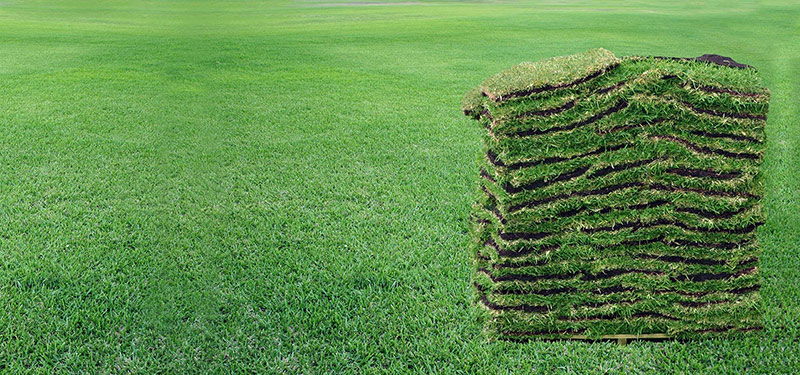Many Orlando lawns are comprised of St. Augustine grass. St. Augustine is the most popular type of turf used in this region, as it grows very well in our subtropical climate. St. Augustine has wide blades and is a very thick, dark green grass. Its thickness, due to the formation of dense runners, make it very hard for weeds to penetrate, which makes it easy to maintain. When St. Augustine is installed in Central Florida, the time of year it is installed is crucial.
St. Augustine grass will remain dormant in colder temperatures, so normally it doesn’t need mowing in the winter months. To be certain that the sod in your new Orlando lawn takes root and survives in the long run, the temperature has to be warm enough so that the grass does not go dormant.
The best temperature for St. Augustine sod installation is above 80 degrees Fahrenheit in the day and above 65 degrees in the evening. St. Augustine will grow rapidly in this temperature range so it will become well established in your lawn. Our recommendation is that you install St. Augustine in the early part of the summer, giving your new turf time to establish its root system.
Installing your grass in the fall, or even late in the summer, may cause problems. Cooler weather may arrive, not giving your grass enough time to establish its roots. When the ground temperature is less than 55 degrees, root growth will cease. If this occurs, your lawn may not survive the cooler winter months.
Spring installation of St. Augustine sod can also be problematic. If the sod is placed prior to the time the ground has sufficiently warmed, the grass will remain dormant and not form a system of roots until the ground temperature rises. In this case, weeds will be able to grow between the patches of sod. If you need to do a spring St. Augustine sod installation you should install the sod in areas that get a great deal of sunlight, which will increase ground temperatures.
When first installed, St. Augustine sod is rather frail. To increase the chance that your new lawn in Orlando will be healthy, you should install it when the temperatures are adequate. After installation, the grass should be watered immediately. Try to keep the soil moist as this promotes the growth of roots. In the very best of conditions your new lawn will take 2 weeks to form firm roots, however, it will take longer if conditions are not ideal.
Preparing The Site
Your new sod cannot be placed on poor soil and grow well. The ground needs to be well prepared prior to placing the rolls. All rocks, debris, and weeds must be removed. Weeds must be removed by the roots, not just superficial removal. The soil should be aerated to be certain it is not packed. The ground should be graded so that water does not pool in puddles. It is best if a layer of top soil is placed, combined with a nitrogen and mineral containing grass fertilize, to promote root growth.
Sod Delivery
Rolls of St. Augustine sod are live grass. Therefore, sod should be placed soon after delivery to prevent it from becoming damaged. Normally, it should be placed within one day after it is delivered. The sod should be placed within 72 hours of the time it is harvested. Fresh sod will have moist soil that’s not dry when touched. The blades of grass should feel cool and have a dark green color. The strips of sod should be placed in straight lines, and staggered, similar to the way bricks are laid. If the placement of the sod is delayed for any reason, lay the pieces out in a shady area and help them stay moist by watering them.
Watering Your New Lawn
To promote the growth of roots, the region where sod will be placed must be watered, on the day before it is installed. After the sod is laid, it should be watered twice a day with about a quarter inch of water. The early morning and early evening are the best times to water. This watering should occur for 2 weeks after the sod is installed. The roots should be well established after this time period.
To ensure the roots stay moist, more water may be required if the weather is extremely hot or dry. The edges of the pieces of sod should abut each other so that they don’t become dry. After the roots are established, the watering frequency may be reduced.

